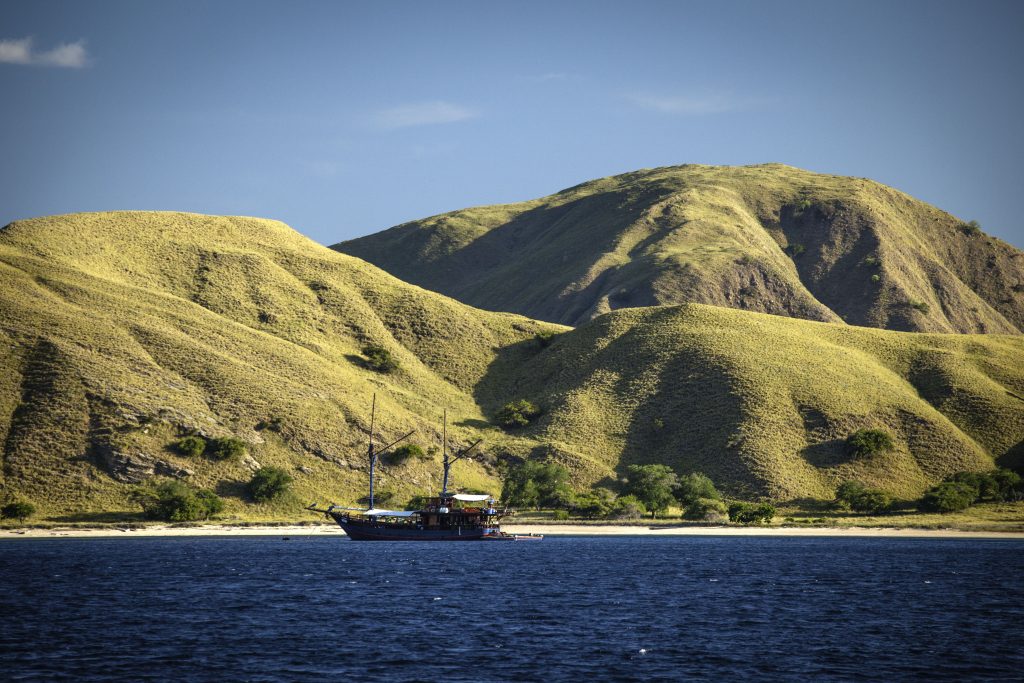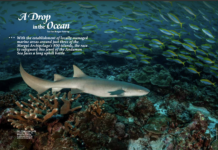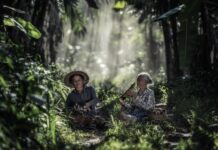
Preserving the Komodo dragons of Indonesia
By Tommy Schultz
‘Hic sunt dracones’ (Thar be dragons) – that’s the terrifying inscription left by map-makers more than 500 years ago to warn medieval explorers of the mythical creatures lurking beyond the bounds of the known world. According to these legends, man-eating dragons inhabited the far-flung islands of East Asia, surrounded by treacherous waters teeming with sea serpents. At the time, few dared to venture ‘off the map’.
That the real life animal behind these ancient seafarers tales remained a mystery until the early 20th century is potent reminder of just how little is known about one of the world’s last remaining giant reptiles – Indonesia’s Komodo dragon.
History of the dragons
First introduced to the Western scientific community in 1910, stories of ‘land crocodiles’ reaching up to seven metres were circulating among Dutch seamen exploring the remote islands of the archipelago at the turn of the century. The ancestors of the modern Komodo dragon were a type of monitor lizard of the superorder Lepidosauria which appeared about 250 million years ago at the end of the Paleozoic era which are related to, but not directly descended from dinosaurs.
Most of these animals disappeared with the extinction of the dinosaurs around 65 million years ago, however some species of large land-based lizards survived, dispersing across Asia, Europe and into North America. The species that evolved to become Varanus komodoensis is believed to have inhabited Indonesia and Australia starting about four million years ago. Fossil evidence suggests that these giant lizards once thrived as far away as Timor, well to the east of their current refuge of Komodo National Park and nearby Flores.

Dwindling numbers
Today there are thought to be less than 5,000 Komodo dragons left in the wild and their numbers are believed to be still declining. The species is listed as vulnerable on the Red List by the International Union for Conservation of Nature (IUCN). This means that unless the conditions leading to the decline of the species are improved, the animal is very likely to become endangered.
Dwindling numbers of the Komodo dragon have been largely linked to two factors – the loss of its primary prey (Rusa deer) through poaching and the loss of habitat from human encroachment.
Life on the islands of Komodo, Rinca, Flores, Gili Motang and Padar (the current range of the Komodo dragon) is difficult. The rugged landscape consists mostly of parched savannah – the dusty browns and greys a stark contrast to the endless green iridescence of the rest of the Indonesian archipelago. Since the cluster of islands where the Komodo dragon lives have smaller land masses, the resources available for sustaining life are proportionately less than the biologically plentiful islands of Java, Sumatra and Bali.
Top predator
In the evolutionary race to become the top predator in these more challenging environs, a very large lizard such as the Komodo dragon has an advantage over a large predatory mammal of identical body weight, due to the lower total energy requirements needed by cold blooded reptiles to survive.
Considering that it is estimated that an adult Komodo dragon can devour up to 80% of its body weight in a single meal, these hardy predators can go much longer between meals than an apex mammalian predator such as a Sumatran tiger, which burns thousands of calories just to maintain the minimum body temperature required for survival. Dragons are also much more voracious eaters than large mammalian predators, consuming up to 88% of the total body mass of their prey (compared to 70-75% for big cats).

Loss of natural habitat
Frontier settlers here often resort to slash and burn agriculture, planting crops that cannot survive in the shade of the forest canopy that the native Rusa deer depend on for survival. And with other sources of meat difficult to find, the locals sometimes poach the deer. With the loss of both their hunting and breeding habitat and the prey that sustains them, Komodo dragons are among the first species to disappear from an area that has been clear cut. Enacting and enforcing conservation programs is a challenge anywhere in the world, but the task is even more difficult in developing countries like Indonesia.
Conservation through tourism
In 2003, The Nature Conservancy (TNC) proposed a plan to fund a conservation program in Komodo National Park through the promotion of tourism via a public-private partnership. The scheme would be self-financed via a park entrance fee of approximately $60 USD per tourist. With annual visits to the park hitting 60,000 in 2013 (up 20% from 2012) and growing, local communities within Komodo National Park are quickly learning about the economic opportunities that all these foreign visitors can bring.
With the prospect of stabilising Komodo dragon population numbers throughout their remaining range, scientists are exploring the possibility of re-introducing the species throughout the much larger island of Flores and beyond. Many believe the dragons were once ubiquitous here, but as the human population has increased to 1.5 million, the animals are now thought to only inhabit very isolated areas of the western and northern coasts.
A team of scientists led by Bali’s Dr. Putra Sastrawan and Italian biologist Claudio Ciofi have experimented capturing Komodo dragons using 10-foot mousetraps baited with freshly-killed goats. Once subdued, the animal is tagged with a microchip ID tag and blood samples are taken for genetic study. Once the blood is analysed, its genetic code is added to a growing database – think Komodo dragon family tree – that can be used to choose the animals that will be reintroduced to Flores, Padar and beyond to re-establish the populations on these islands.

It is scientists such as Indonesia’s Dr. Sastrawan who have been the loudest advocates for the preservation of the animals. Finally gaining recognition as a charismatic ‘umbrella species’ such as China’s iconic giant panda, government leaders and local entrepreneurs from Indonesia are recognising how much more valuable the Komodo dragon can be for the economic development of the country when it is still alive and in the wild.
Perhaps it’s the remnants of that old explorer’s wanderlust that still drives the adventurous travellers among us to catch a glimpse of an ancient creature
that sparked that ominous warning so many centuries ago. After all, isn’t the world just that much more magical when maps can still truthfully bear the legend ‘Thar be dragons’?
For more stories and photos, check out Asian Geographic Issue 115.










